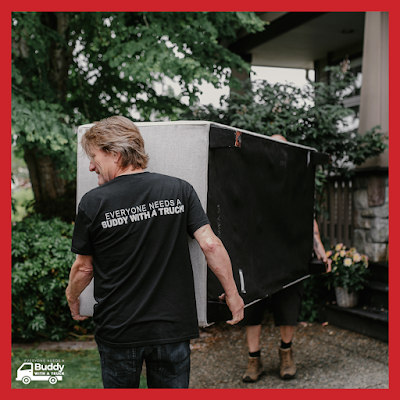Construction projects often leave behind a trail of debris, from rubble to discarded materials, posing a significant challenge for builders and contractors alike. Efficiently managing this debris is crucial for maintaining a clean and safe work environment and adhering to environmental regulations and project timelines. In this guide, we delve into the intricacies of construction debris removal, offering invaluable tips and strategies to streamline the process and ensure a seamless workflow.
The Importance of Construction Debris Removal
Construction debris removal extends beyond cosmetic concerns; it’s critical to ensuring safety, efficiency, and regulatory compliance on construction sites. Unattended debris poses significant hazards, from tripping risks to potential injuries from sharp objects, jeopardizing worker safety.
Additionally, cluttered sites impede productivity, causing delays and escalating project costs. Environmental implications are equally significant, as improper disposal contributes to pollution and may lead to legal consequences. Efficient debris removal maintains a clean and organized workspace and cultivates a safer and more productive environment, benefiting all stakeholders involved.
The Challenges of Managing Construction Debris
Managing construction debris presents multifaceted challenges that demand careful planning and execution. One major hurdle is the sheer volume and diversity of materials generated during construction, ranging from concrete and wood to hazardous substances like asbestos. Sorting and segregating these materials for proper disposal or recycling require specialized knowledge and equipment.
Additionally, logistical issues such as transportation and storage further complicate the process, especially in urban environments with limited space. Balancing cost-effectiveness with environmental responsibility adds another layer of complexity. Overcoming these challenges necessitates a strategic approach and adherence to best practices in debris management.
Environmental Considerations in Debris Removal
Construction debris removal isn’t just about tidying up; it’s about minimizing the project’s environmental footprint. Improper construction waste disposal can lead to soil, water, and air pollution, jeopardizing ecosystems and public health. Therefore, it’s crucial to prioritize environmentally sustainable practices such as recycling, reusing, or repurposing materials whenever possible.
Additionally, adhering to local regulations and obtaining necessary permits for waste disposal sites helps mitigate environmental impact. By integrating eco-friendly strategies into debris removal plans, construction projects can minimize environmental harm and contribute to a more sustainable future.
Safety Concerns Associated with Construction Debris
Construction sites are inherently hazardous environments, and managing debris adds another layer of risk. Left unattended, debris can create tripping hazards, impede emergency access routes, and even lead to structural instability if not adequately addressed. Moreover, construction debris often includes sharp or heavy materials that can cause injuries to workers if mishandled.
Dust and airborne particles from demolition activities pose respiratory risks, especially in poorly ventilated areas. Implementing strict safety protocols, providing appropriate personal protective equipment (PPE), and conducting regular site inspections are essential to mitigate these risks and ensure a safe working environment for all involved.
Regulatory Compliance and Debris Disposal
Navigating the regulatory landscape surrounding debris disposal is crucial for construction projects to avoid legal repercussions and environmental harm. Regulations vary by location and may include restrictions on the materials that can be disposed of, proper handling procedures, and permits for waste disposal sites.
Compliance often entails proper documentation of waste streams, adherence to recycling mandates, and verification of licensed waste haulers. By staying informed about relevant regulations and ensuring strict adherence, construction teams can mitigate risks and demonstrate their commitment to responsible environmental stewardship.
Strategies for Efficient Debris Removal Planning

Efficient debris removal planning ensures a safe, clean environment for project success. Implementing strategic approaches streamlines the process, minimizes disruptions, and optimizes resources. Here are key strategies:
- Pre-Project Assessment: Before starting, analyze potential waste sources to tailor a debris management plan that minimizes waste and maximizes resource use.
- Just-in-Time Removal: Remove debris promptly as it’s generated to prevent accumulation, reduce congestion, and maintain productivity.
- Segregation and Recycling: Separate materials on-site to maximize recycling opportunities and minimize landfill waste, partnering with local facilities for proper disposal.
- Technology Utilization: Use waste tracking software, digital communication platforms, and GPS tracking to optimize planning, improve decision-making, and streamline debris removal.
Essential Equipment for Construction Debris Removal
Regarding construction debris removal, having the right equipment is essential for efficiency, safety, and ensuring a clean worksite. From essential tools for manual cleanup to heavy machinery for handling larger debris, each piece of equipment plays a crucial role in streamlining the removal process. Let’s explore four essential pieces of equipment commonly used in construction debris removal:
- Dumpsters and Roll-Off Bins: These large containers are ideal for collecting and temporarily storing construction debris, from wood and concrete to metal and drywall. Roll-off bins are particularly convenient as they can easily transport to and from the site.
- Skid Steer Loaders: Skid steers equipped with buckets or grapples are versatile machines for lifting, loading, and transporting debris across the construction site. Their compact size and maneuverability make them invaluable for navigating tight spaces.
- Excavators: Excavators are indispensable for handling heavy debris, such as concrete slabs or demolition rubble. With their powerful hydraulic attachments, excavators can efficiently break down large structures and load debris into dumpsters or trucks.
- Dump Trucks: Dump trucks are essential for transporting large volumes of debris off-site to disposal facilities or recycling centers. Their ability to quickly load and haul away debris helps maintain workflow and prevent accumulation on the construction site.
Sorting and Segregation Techniques for Different Materials
Effective sorting and segregation of construction debris are essential to maximizing recycling opportunities and minimizing waste sent to landfills. Different materials, such as concrete, wood, metal, and plastics, require specific handling to ensure proper disposal or recycling. Implementing on-site sorting stations with clearly labeled bins or containers facilitates the separation process. Workers should be trained to identify and segregate materials according to their recyclability and disposal requirements.
Establishing protocols for hazardous materials, such as asbestos or lead-based paint, also ensures safe handling and compliance with regulatory guidelines. By employing efficient sorting and segregation techniques, construction projects can reduce environmental impact and enhance resource recovery efforts.
Maximizing Recycling Opportunities in Debris Removal
Maximizing recycling opportunities in debris removal benefits the environment and promotes sustainability and cost-effectiveness. Construction materials such as concrete, asphalt, wood, and metal can often be recycled or repurposed for future projects. Implementing a robust recycling program involves partnering with local recycling facilities or waste management companies that accept construction debris.
Additionally, incorporating recycled materials into new construction projects reduces the demand for virgin resources and lowers the overall carbon footprint. Education and training for project stakeholders on the importance of recycling and proper waste management practices play a crucial role in maximizing recycling opportunities. By prioritizing recycling initiatives, construction projects can contribute to a circular economy and minimize the depletion of natural resources.
Cost-Effective Solutions for Construction Debris Removal
Implementing cost-effective solutions for construction debris removal is essential for managing project budgets without compromising quality or environmental compliance. Strategies such as bulk disposal agreements with waste management companies, utilizing local recycling facilities, and optimizing transportation routes can help reduce disposal costs. Renting equipment only when necessary and negotiating favorable terms with suppliers can further minimize expenses.
Additionally, implementing waste reduction practices, such as careful material planning and inventory management, can prevent excess waste generation. By identifying and implementing cost-saving measures, construction projects can achieve efficient debris removal while maximizing returns on investment.
Minimizing Disruption to Project Timelines
Minimizing disruption to project timelines is crucial for ensuring timely completion and avoiding costly delays. Effective planning and coordination among project stakeholders are essential to streamlining debris removal activities without impacting critical construction milestones. Integrating debris removal schedules into the project timeline and allocating sufficient resources for cleanup tasks are also important.
Implementing just-in-time debris removal strategies, where waste is removed promptly as it accumulates, helps prevent congestion and maintains a clean working environment. Additionally, proactive communication among contractors, subcontractors, and waste management providers facilitates prompt resolution of any issues, minimizing potential delays. By prioritizing efficiency and communication, construction projects can effectively mitigate disruptions and adhere to project timelines.
Best Practices for Site Cleanliness During Construction
Maintaining site cleanliness during construction is vital for promoting safety, productivity, and a positive public image. Implementing best practices for site cleanliness involves establishing clear expectations and protocols for waste management and housekeeping. This includes designating designated storage areas for materials and debris, regular sweeping and trash removal, and properly containing hazardous materials.
Enforcing cleanliness standards through regular inspections and employee training fosters a culture of accountability and ensures compliance with regulatory requirements. Moreover, promoting awareness among workers about the importance of cleanliness and maintaining a tidy workspace enhances overall morale and productivity. Construction projects can create a safer, more efficient, and professional work environment by prioritizing site cleanliness.
The art of construction debris removal is pivotal for project success, worker safety, and environmental responsibility. With the right strategies and resources in place, you can navigate this aspect of construction seamlessly. Looking no further than Buddy With A Truck for efficient and reliable debris removal services in Langley, BC. Our experienced team is equipped to handle all your debris removal needs promptly and professionally.
Don’t let debris slow down your project or compromise safety standards. Contact us today at +1 (236) 377 2505 and let Buddy With A Truck be your trusted partner in construction debris removal.

